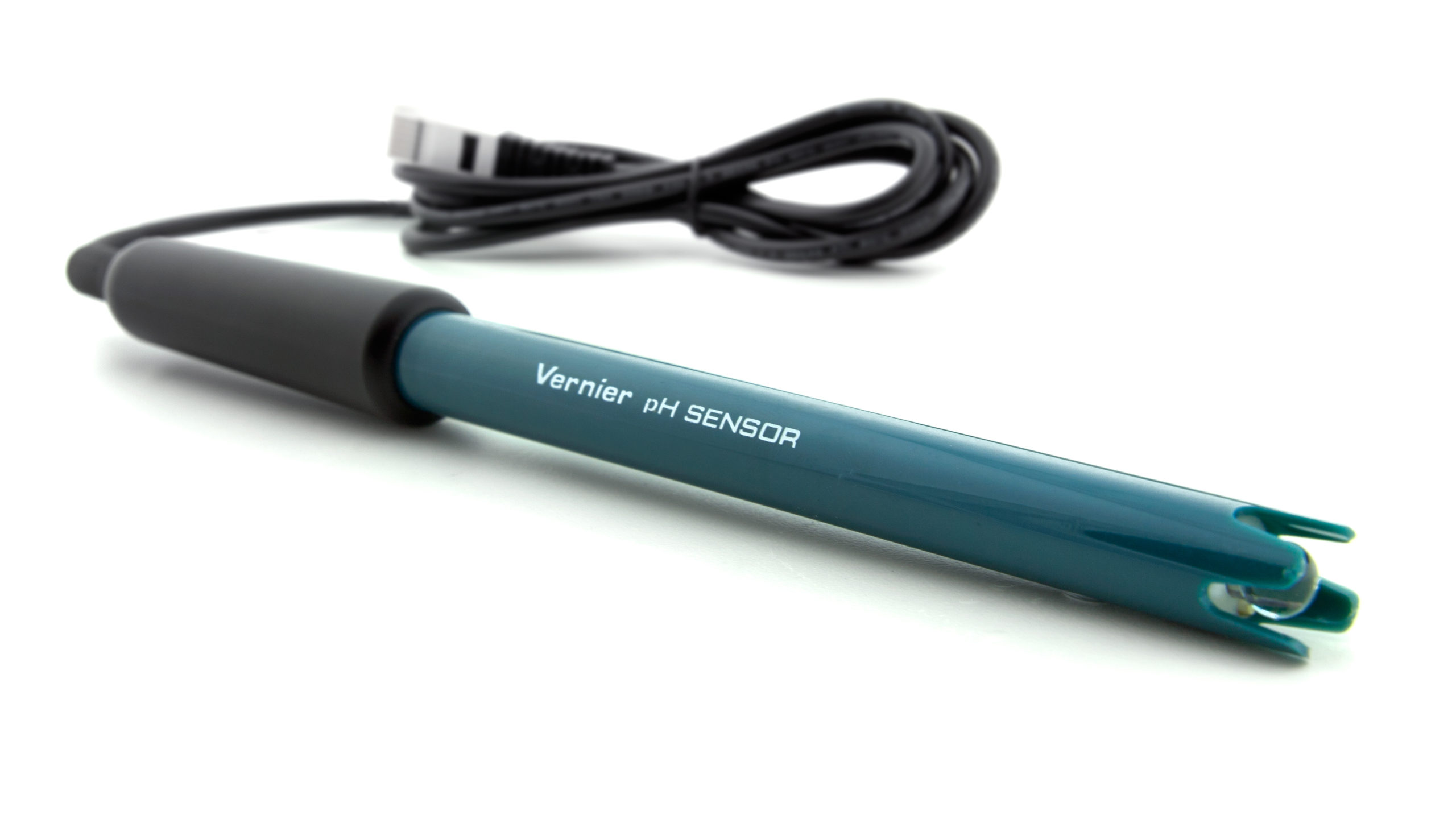pH Sensor (PH-BTA)

Troubleshooting
- Primary Test: Does it read approximately 4 in its storage solution? Note: A reading of 13 to 14 indicates 0 volts and might mean that the sensor is defective or damaged.
- Secondary Test: Take readings in fresh buffers, NOT distilled water! If no buffers are available, try it in vinegar (~ pH 2.5 to 3.5) and ammonia (~ pH 10.5 to 11.5). If readings do not change when the sensor is placed in different solutions, the sensor is possibly defective or damaged.
Additional Troubleshooting
OPERATION
- The glass bulb of my pH Sensor is broken. Can it be repaired?
- The pH electrode I have been using no longer seems to work or is slow to respond. Is there anything I can do to fix it?
- My pH probe does not give an accurate reading. What should I do?
- Why doesn't my pH Sensor read pH 7 in distilled or deionized water?
- Why does my pH sensor experience drift or calibration issues?
- Will I get interference when I put two sensors in the same solution?
- What type of liquids cause problems for the pH Sensor?
- The liquid inside my pH Sensor is low or gone. Will it still work?
MAINTENANCE and STORAGE
- Where do I get pH or ORP Storage Solution? (Buffer Storage Solution)
- What do I do about mold growth in my bottle of pH electrode storage solution?
- How can I keep my pH or ORP storage solution from spilling when the sensor is in use?
- My pH sensors were stored dry. Will they still work?
- What is the best way to clean the glass bulb of the pH electrode?
- Do any of your sensors require special storage?
- I bought your pH buffer capsules. Can I make storage solution for my pH Sensors with this kit?
- How do I dispose of my pH sensor?
- My pH Sensor has mold inside the shaft. How do I remove it?
Specifications
- Electrode type: Sealed, gel-filled, polycarbonate body, Ag/AgCl reference, single junction
- Range: pH 0–14
- Accuracy with new electrode (pH): ±0.2
- Temperature range: 5 to 80 °C (readings not compensated)
⚬ Isopotential pH: pH 7 (point at which temperature has no effect) - Storage solution: pH-4/KCl solution (10 g KCl in 100 mL buffer pH-4 solution)
- Shaft diameter: 12 mm OD
- Default calibration coefficients: slope –3.838; intercept 13.720
Calibration
Calibrate? Usually no. However, for the most accurate measurements with this sensor, we recommend calibration. It is a simple process that only takes a few minutes. Custom calibrations can also be stored directly onto the sensor.
- For calibration instructions, see: How do I calibrate my sensor?
- To save a calibration to a particular sensor, see: How do I save a custom calibration to my pH sensor?
- Where do I get pH buffer solutions?
Related Products
- Electrode Support (ESUP)
- Microstirrer (MSTIR)
- Stir Station (STIR)
- Drop Counter (VDC-BTD)
- Precision Volume Dispenser (DC-DISP)
- Go Direct® pH Sensor (GDX-PH)
Replacement/Maintenance Parts
- pH Buffer Capsule Kit (PH-BUFCAP)
- pH Storage Solution (PH-SS) (500 mL bottle)
- Storage Solution Bottles (5) (BTL)
